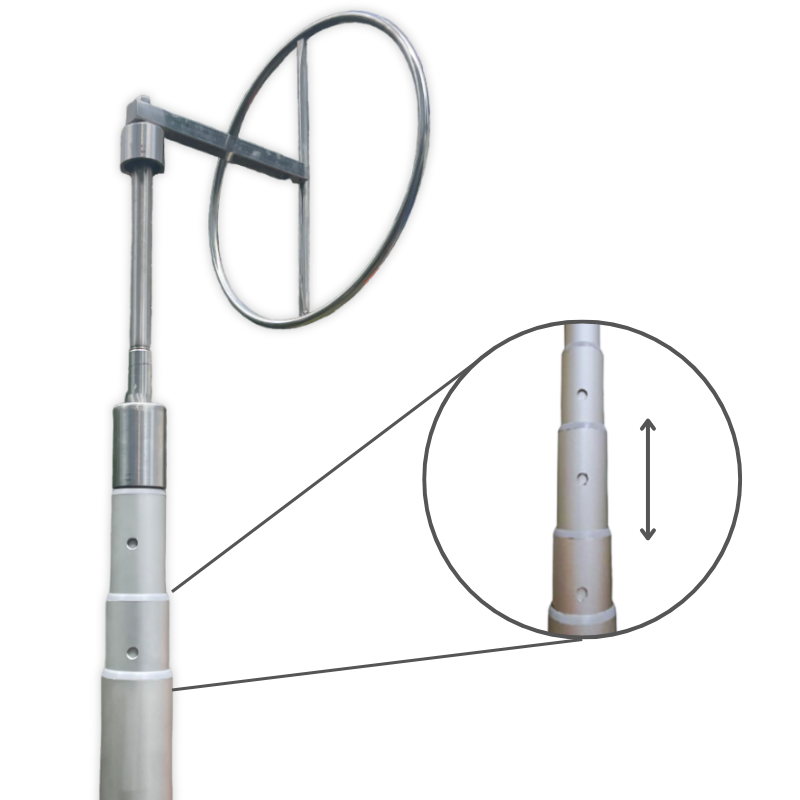Pickleball, the fast-growing sport that combines elements of tennis, badminton, and ping pong, has gained immense popularity in recent years. Played both indoors and outdoors, pickleball is not immune to the whims of Mother Nature, particularly the wind. Wind can be a significant factor affecting the dynamics of a pickleball game, and understanding its direction and impact can make a crucial difference in your performance on the court. One notable product to help determine wind direction and speed is the custom printed pickleball windsock.
In this blog post, we will explore the importance of wind direction in pickleball and provide some strategies to help you adapt to varying conditions.
What's the Impact of Wind Direction in Pickle Ball?
-
Serve and Return: The direction of the wind can significantly affect your serves and returns. When serving into the wind, you may need to adjust your aim slightly higher and hit the ball with more power to ensure it clears the net. Conversely, when serving with the wind at your back, you may need to reduce the power to avoid overshooting the baseline.
-
Volleying and Dinking: Wind can also affect your volleying and dinking shots. When hitting against the wind, you may need to add a bit more spin to your shots to keep them in control. Conversely, when the wind is at your back, you might need to be careful not to hit the ball too hard, as it can easily sail out of bounds.
-
Lob Shots: Wind direction can dramatically impact your ability to execute successful lob shots. When lobbing into the wind, your lob will tend to stay lower, making it easier for your opponent to smash it back. Conversely, when lobbing with the wind, your lob may carry farther, making it more challenging for your opponent to track down.
-
Court Positioning: Smart court positioning becomes even more critical when dealing with wind. You'll want to position yourself to take advantage of the wind's effects, whether it's standing slightly behind the baseline to assist with clearing the net when serving into the wind or moving closer to the net to cut down on the impact of a strong tailwind.
As you can see, the impact of wind on the game is significant. Determining wind direction, speed and gusts is important to ensuring you're on top of your game. Windsocks are a great product that are not only visually appealing, but also functional in that they can help your court users improve their game.
Thanks to your Windsock, you now the direction and speed of the wind. Now, you game needs to adapt to windy conditions
Adapting your Pickleball Game to Windy Conditions
-
Practice in Different Conditions: The best way to adapt to varying wind conditions is to practice in them. Try playing in windy conditions to get a feel for how the wind affects your shots and adjust your strategy accordingly.
-
Stay Agile: Be prepared to adjust your game plan on the fly. Wind conditions can change throughout a match, so stay adaptable and open to making strategic adjustments as needed.
-
Use Spin: Incorporating topspin or underspin into your shots can help you control the ball better in windy conditions. Spin can counteract the wind's effects and keep the ball on a more predictable path.
-
Communication: If you're playing doubles, effective communication with your partner is crucial. Share information about the wind's direction and how it's affecting your shots so that you can work together to adapt.
Wind direction is an important factor to consider when playing pickleball. Understanding how the wind impacts your shots and being able to adapt your game accordingly can give you a significant advantage on the court. The best way to understand wind direction, speed and gust is through the use of a pickleball windsock.
By practicing in different wind conditions and staying flexible in your approach, you can become a more versatile and skilled pickleball player, ready to face any challenge that Mother Nature throws your way. So, next time you step onto the pickleball court, remember to factor in the wind and use it to your advantage.

















